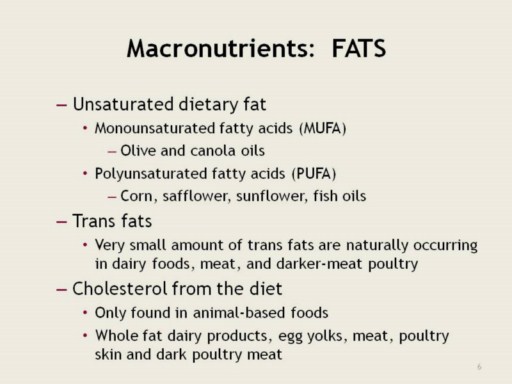| front |1 |2 |3 |4 |5 |6 |7 |8 |9 |10 |11 |12 |13 |14 |15 |16 |17 |18 |19 |20 |21 |22 |23 |24 |25 |26 |27 |28 |29 |30 |31 |32 |33 |34 |review |
 |
MUFA
fats are those that are consumed in high quantities among peoples living
in the Mediterranean region of Europe and North Africa.
MUFAs
and fish oils have been shown to be heart-healthy fats and their
consumption should be encouraged over saturated fats.
Trans
fats in the diet primarily come from consuming processed foods. For
example, most margarines and shortenings are made of hydrogenated oils.
Hydrogenation is a process where food manufacturers take a liquid oil
(soy bean is a very commonly used oil in the process), and they
chemically alter it, adding hydrogen to the carbon chain of the fat.
This results in fewer double bonded carbons and more hydrogens in the
chain. This causes a liquid fat (which is most often a PUFA) to become
saturated with hydrogen, thereby causing it to behave like other
saturated fats (such as butter, which is firm at room temperature).
Hydrogenation came into development when butter became very costly in
the 1940s and 1950s. It is a way to increase shelf stability and it
is very cheap. Many snack foods like crackers, cookies, chips, cake
mixes, ready-to-use frostings, and pastries are made with hydrogenated
oils.
We
get cholesterol from our diet, unless we consume NO animal products.
Cholesterol is required for cellular membranes and other functions. We
also synthesize cholesterol in our livers, so cholesterol does not need
to be consumed for health.
The lowest quantities of fats consumed are recorded in Africa, while the highest consumption occurs in parts of North America and Europe. The important point is that there has been a remarkable increase in the intake of dietary fats over the past three decades and that this increase has taken place practically everywhere except in Africa, where consumption levels have stagnated. WHO, 2003 |